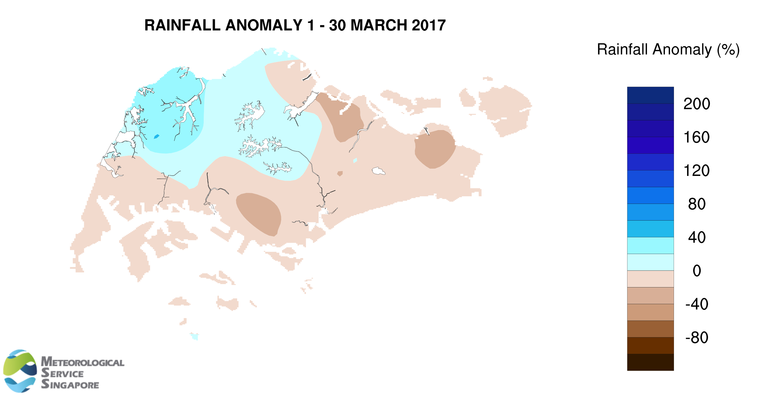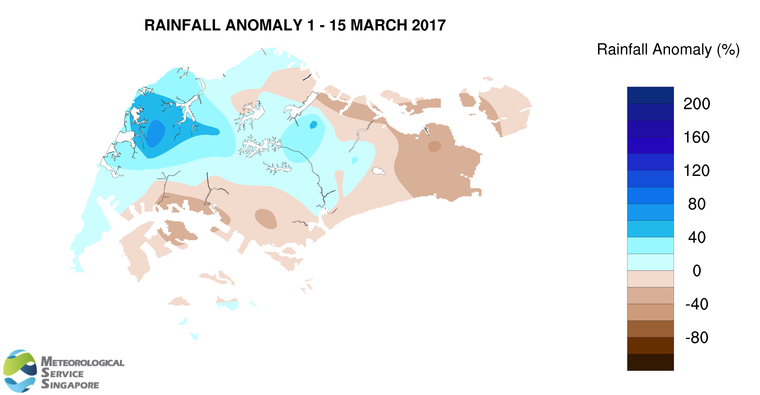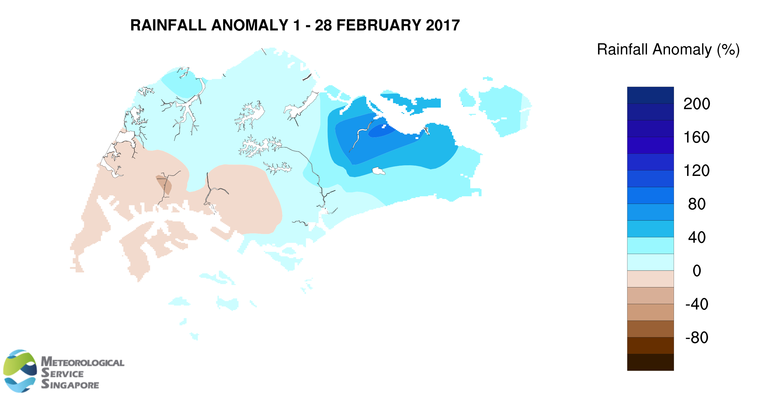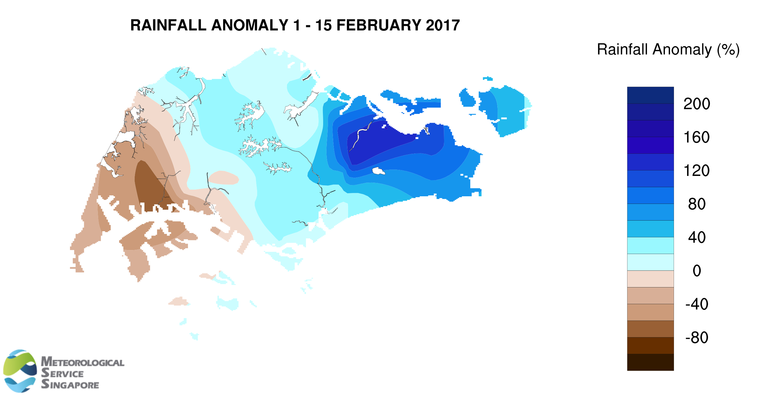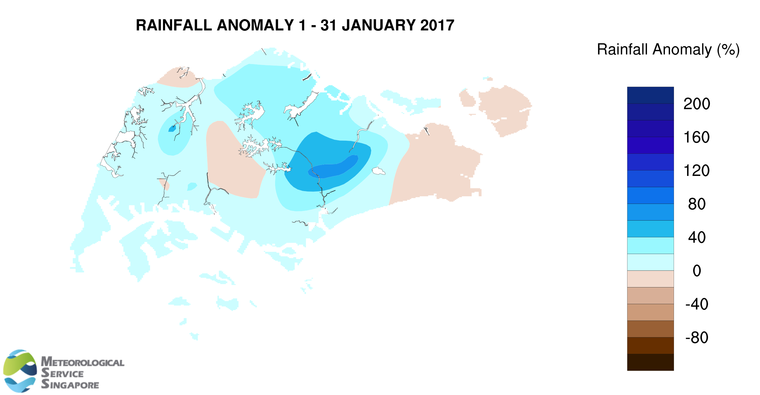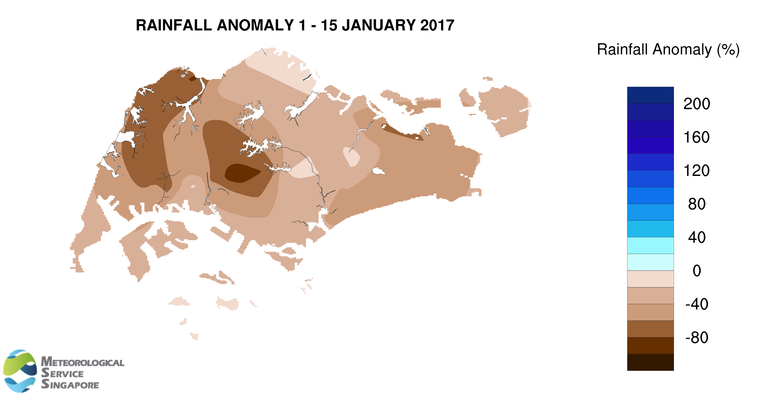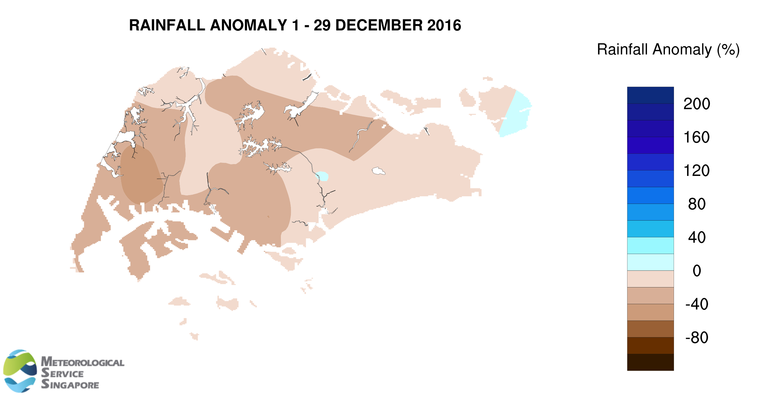Wet and warm weather expected in the first fortnight of April 2017
Singapore, 31 March 2017 – Inter-monsoon conditions characterised by low level winds that are light and variable in direction set in over the region in the last week of March 2017. The Inter-monsoon period is forecast to persist until end May 2017.
2 During the inter-monsoon period, warm weather and thundery showers in the afternoon and early evening are common. The predominantly light and variable winds during this period, coupled with strong daytime heating of land areas, are conducive for the development of localised and intense thunderstorms. In addition, the incidence of lightning activity during the inter-monsoon months is higher than other times of the year.
3 The first fortnight of April 2017 is forecast to be wet with short-duration moderate to heavy thundery showers mostly in the afternoon on six to seven days, and could extend into evening on a few of these days. In addition, a temporary shift in the winds to blow from the southwest or west could lead to the development of Sumatra squalls to the west of Singapore, and bring widespread thundery showers accompanied by gusty winds to Singapore on two or three days in the predawn and early morning. Overall, rainfall in the first two weeks of April is expected to be slightly above normal.
4 Climatologically, April is one of the warmest months of the year. For the first half of April 2017, the temperature is forecast to range between 24°C and 34°C. A few warm days can be expected in the middle of the period where the daily maximum temperatures could reach a high of around 35°C.
5 For updates of the daily weather forecast, please visit our MSS website (https://www.weather.gov.sg), NEA website (www.nea.gov.sg), or download the myENV app, or the MSS’ Weather@SG app.
Review: 1 – 30 March 2017
6 In the second half of March 2017, the prevailing northeasterly winds gradually weakened to become light and variable in direction as the region transitioned to the inter-monsoon period.
7 In March 2017, Singapore experienced thundery showers mostly in the afternoon. The showers were heaviest on the afternoon of 25 March 2017 over northern Singapore, with the highest daily total rainfall of 110.4mm recorded in the Mandai area. The heavy thundery showers were induced by strong heating of land areas coupled with convergence of winds in the surrounding vicinity.
8 The mean temperature for March 2017 to date was 27.4°C which is 0.1°C lower than the long-term mean temperature. During the month, there were a few warm days where the highest daily maximum temperature ranged between 35.0°C and 35.7°C. The daily minimum temperature ranged between 22.1°C and 26.5°C.
9 More than half of Singapore received below normal rainfall in March 2017. The lowest rainfall of 139.8mm (36% below average) was recorded around Queenstown area. Rainfall was highest around the Choa Chu Kang area where 320.8mm (41% above average) was recorded.
CLIMATE STATION STATISTICS FOR APRIL (Climatological reference period: 1981 – 2010)
| Mean daily maximum temperature | 32.3 °C |
| Mean daily minimum temperature | 25.0 °C |
| Mean monthly temperature | 28.0 °C |
| Mean rainfall for the month | 154.8 mm |
| Mean number of rain days | 14 |
| Highest monthly mean daily maximum temperature | 33.9 °C (1983) |
| Lowest monthly mean daily minimum temperature | 23.9 °C (1982) |
| Highest monthly rainfall | 311.6 mm (2000) |
| Lowest monthly rainfall | 43.1 mm (1983) |
